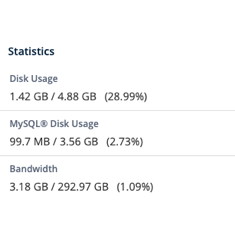Questions on Venture Capital
January 26th, 2007
Although far from popular, people do contact me with questions about the content of this blog. They do not always use the comment form below, they often use email as mine is easy to find. Once I got a question on residual value and how to include it when valuing an entrepreneurial venture.
Someone in China had questions on valuing a new high growth company using discounted cash flows. They pointed to a website which I had found and recommended and then asked why none of the three spreadsheets I’ve made had a residual value calculation.
The residual value is an estimate of all future cash flows a company will earn beyond a certain point in time. It is difficult to estimate income, market share, market size and what have you in the far future. So after say five years of detailed estimates an additional sum is determined based on the last detailed income estimate to represent all future cash flows. This sum is then discounted and added to the discounted cash flows for the first five years. The total is the estimated present value of the venture.
Why didn’t I do a residual value calculation?
I don’t have a good reason, it could have been just an oversight, it wasn’t laziness because the three spreadsheets I did make took many hours of coding and debugging in VBA. My spreadsheets were experiments in writing VBA and were designed to perform quick “what if” calculations. If you really are seeking venture capital financing you will likely need to create a custom spreadsheet not rely on something some guy posted on his blog.
It should go without saying if you download a Microsoft Excel file from my website, upload it to another website and claim it as your own work, I will find out, and I will take action.
The other reason I didn’t do a residual value calculation is discounted cash flow is not the preferred method of valuing a company for VCs. There are a lot of ways to value a company:
- Discounted cash flows
- Comparing it to one or more publicly traded companies
- Asset based pricing
- Multiples of a company’s sales or earnings
- Anticipated growth in future market share
The fifth option is what the Classic VC Method does. This is the preferred way to quickly estimate the future value and present value of a risky high growth venture. All three of my spreadsheets implement this method. The reason I did ever more elaborate VBA based cash flow models was for comparison purposes and to determine when the company would be cash flow positive or if it would run out of cash at some point.
If you are trying to raise money from venture capitalists the three most important things they look for are:
- Team
- Market Attractiveness
- Sustainable Competitive Advantage
VCs invest in people as much as ideas. If they are not confident your team can execute your business plan they are unlikely to invest even if you have a great idea. VCs are looking for really large returns so the market you plan to sell into needs to be sufficiently large. The VC will also look at the existing and potential competitors, barriers to entry that can be erected, the role government regulations may play etc. Lastly if you can show a sustainable competitive advantage, something other than first mover advantage which isn’t sustainable, say intellectual property, patents, switching costs; you increase your chances of receiving funding.
The actual numbers will likely be completely redone by the VC, they will have their own estimates for market size, market share, and the amount of capital the venture requires. Besides market size, market share, and profit margin, the number that can have the biggest effect on your valuation using the classic VC method or discounted cash flows model is the discount rate. The VC wants to earn the highest return possible, the larger this number the greater percentage of the company you will likely have to give up to recieve their money.
In the final presentation of my venture capital financing class at the Sauder School of Business I concluded with the following quotation from Chester L. Karrass:
In business, you don’t get what you deserve. You get what you negotiate.
I made a spreadsheet to go along with the example on strategis.gc.ca which doesn’t use VBA so you’ll have to modify it to work with your own numbers. Maybe it will help people understand the online example better. However in addition to understanding discounted cash flow calculations you need to learn the Classic VC Method as outlined in Jeffry Timmons book and elsewhere:
- Estimate the company’s net income in a number of years, at which time the investor plans on harvesting. The estimate will be based on sales and margin projections presented by the entrepreneur in his or her business plan.
- Determine the appropriate price-to-earnings ratio or P/E ratio. The appropriate P/E ratio can be determined by studying current multiples for companies with similar economic characteristics.
- Calculate the projected terminal value by multiplying net income and the P/E ratio.
- The terminal value can then be discounted to find the present value of the investment. Venture capitalists use discount rates ranging from 35 percent to 80 percent, because of the risk involved in these types of investments.
- To determine the investor’s required percentage of ownership, based on their initial investment, the initial investment is divided by the estimated present value.
To summarize the above steps, the following formula can be used:Final ownership required = required future value (investment) / Total terminal value
= ((1=IRR)^years * investment) / P/E ratio (terminal net income)- Finally, the number of shares and the share price must be calculated by using the following formula:new shares = percentage of ownership required by the investor / ((1 – percentage of ownership required by investor) * old shares)
I added a residual value calculation to my original and simplest spreadsheet. It only considers yearly income rather than monthly which is what I did in my two later spreadsheets. Although I have blogged about venture capital in China and elsewhere, I’m far from an expert don’t let the MBA and BSc. fool you. There are some excellent blogs which are written by successful venture capitalists or people more knowledgeable and connected than I:
Guy Kawaski has written another insightful post on obtaining venture capital, or at least getting to talk to a venture capitalist about your idea for a new business, product, or service. I’ve linked to Guy many times, even above in this very blog posting, but rather than a token ‘go read this elsewhere’ post, I’ll add a link to his latest advice from my most recent post on venture capital financing. If you have comments or questions you can leave them below, sometimes email ends up in spam filters after all.
This entry was originaly posted on , it was last edited on and is filed under: Advice and tagged: Finance, Spreadsheet, Venture Capital.





“I’ve written about Venture Capital even though I’ve never worked in Venture Capital. I’ve also written about being an Entrepreneur even though I’ve never started a business.”
Seriously?…and you write (and consult?) on these topics. Wow.
Yep Dawg. I’ve helped a number of people start a business or expand into a new market. I’ve interviewed at a couple of VC firms but never got hired after my MBA. I’m sorta hoping 2011 will be a better year for me career wise and I’ll be back studying for the CFA in January.
Thanks for stopping by Dawg.
You’re right Muskie. I found your blog via search engine, and have found your material fresh, honest and interesting.
You have nothing to apologize for, and from an old fart like myself, I can state that time does have a way of putting your good karma to work. In other words, you will be “rewarded” for your karma.
Patience is the key.
Although patience doesn’t pay the bills right away, it does build character and emotional perspective – you know, looking at things from other’s viewpoint.
Don’t let the detractors bother you. They will always be out there.
Although some people have suggested I take down my blog or delete certain pieces of information and/or opinions, some people like what I have to say. They find what I have to say is useful.
Despite everything that happened during my time as an MBA student, I still go out of my way to help other people. People I don’t know. People I’ll probably never meet, nor ever be paid back by directly. Maybe there is such a thing as karma, there is definitely something called a “personal reputation”. Who knew going out of your way to help someone who said they were a friend would lead to attacks on your personal reputation…
Also despite everything I learned a few things during my time as a MBA student. I also reinforced and formalized some of my thinking. I may have even made a few friends. But once again I learned painfully that not everyone who says they are your friend, actually is.
I’ve had a personal webpage online for over ten years. I’ve always been honest. I’ve always helped people when I could, especially ‘friends’. I’ve tried to publish some stuff that might be useful, that might be professional, that might actually help my “personal reputation”, that might help me get a job.
I still mainly write about things I’m interested in or things I’m trying to learn about. I’ve been trying to become something of an “Excel Guru”. I don’t know if I’m all the way there yet, but I have read 1000’s of pages on Excel and VBA. I also decided to make something that could serve as a ‘sample’ rather than just add another keyword or bullet point to my resume. I’ve interviewed for Associate positions at venture capital firms. I’m still interviewing…
There are reasons behind most of my postings. Some people may not like the postings or the reasons, but that doesn’t make them invalid or untrue or even not useful. The search engines seem to have rewarded me with a modicum of traffic related to some of my more professional postings. My less professional postings are either inexplicably popular or not read at all.
I try to help people, pass on information and experience, not everyone appreciates that.
Thanks for stopping by, my writing seems to appeal to some Chinese people, Canadian or otherwise. The MyBlogLog widget confirms this.
“VCs invest in people as much as ideas. If they are not confident your team can execute your business plan they are unlikely to invest even if you have a great idea. ”
This is very true. A number of years back, long before the dot com bubble burst, we had a great idea -and a very profitable one related to the knowledge and experience a few of us were trained in. We had VCs lined up…
Then when one of us (my former partner – who is not known for his financial intelligence), opened up his mouth. That was the end of it. People realized that if one member of the team was full of bullshit, then the rest of the group may be of the same ilke. One stupid member of the team, (especially when we had unfortunately had built him up as an “important senior member” …he wasn’t), can ruin it for all.
My lesson in all of this was to place qualified people in place. Don’t let old friendships dictate how you place members and remember, do what’s best for the idea, not what’s best for your friendship.
So now that over 10 years have past… I can see that the idea we initially had would have worked. As the product is out there. As for my old friend? He did eventually screw a number of us due to his misguided incompetence and self perceived importance. And the VCs were right about him. He is currently being investigated for tax fraud and his spouse was also recently charged with tax fraud- got jailed and was financially penalized.
So there you have it. Base business decisions on sound facts, not emotion.
After some more coding and debugging, all the spreadsheets I created to do discounted cash flow valuations using Visual Basic also calculate the residual value and that is added to the net present value of all the carefully estimated cash flows.
Now my spreadsheets better match the example given by the government of Canada on growth capital.